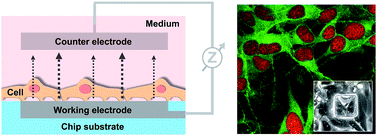An impedimetric microelectrode-based array sensor for label-free detection of tau hyperphosphorylation in human cells
Abstract
Tauopathies such as Alzheimer's disease (AD) belong to the group of neurodegenerative diseases that are characterised by hyperphosphorylation of the


 Please wait while we load your content...
Please wait while we load your content...